What Are the Levels of Singing Voices
The 8 Singing Voice Types: Find Out Yours Here!
As a voice teacher people ask me all the time about the different voice types.
Every singer wants to know his or her voice type.
Usually for two reasons:
1) So they know their range (how high or low they can sing) and…
2) So they know what they can expect out of their voice.
I absolutely love this question because people are always surprised to learn their true voice type.
So let's talk about the different voice types in popular music and what you can expect out of your instrument.
By the way, if you want a great video to walk you though how to find your voice type, check this out:
Voice Types: The 8 Singing Classifications. Find Yours Here!
What is a Voice Type?

With all the talk about famous singers' vocal ranges, it can be really difficult to understand what a voice type actually is.
So before we jump in to discussing the 8 main singing voice types, let's take a moment to talk about what voice type is and why it matters to you.
Here's what you need to know:
Voice type is the classification of a singer's voice based on several different criteria including their vocal range, vocal weight, tessitura, vocal tone and bridge location.
So why does it matter?
Well, the voice type system was originally created to make it easier for singers to be cast for roles in opera.
In other words, if you know that you have the range and tone of a Soprano, then you would audition for and hopefully be cast in the Soprano part.
Classic operas had roles for all the different voice types, like Soprano, Alto, Tenors and Basses.
However, these days knowing your voice type is better at helping you decide which singers to listen to and what songs to pick.
For example, if you know that you're a Tenor, then you may want to look at singers like Ed Sheeran and Sam Smith who are both famous Tenors.
By the way…
Don't worry if you don't know your voice type yet. I'll give you everything you need to know about your voice type and how to find it.
For now, just understand that your voice type is one of the most important things that you can know about yourself as a singer.
Before We Jump In, Remember…
No matter what level you're at, the most important thing is that you are comfortable when you're singing.
There's no good reason for you to strain or hurt yourself in pursuit of high notes if they're not comfortable.

As a general rule of thumb:
If you're not comfortable when you're singing, you're probably doing something wrong.
As we'll see, knowing more about the different voice types certainly helps, but working with a qualified voice teacher is the best way to maximize your vocal ability.
So if you want a vocal program that will help you expand your range without straining, you can check out my complete singing course, Master Your Voice, here.
To learn your voice type and truly understand your range, read on.
Most Discussions of Singing Voice Types Go Like This…
Lots of people determine their range like this:
"I'm a bass because I can sing low notes."
When we dig a little deeper, we find out they think that because their choir teacher gave them bass parts.
Go down the road a few years and you've got a singer who thinks he's a Bass and has never experienced the higher end of his voice.
But in reality, he was the only one in his class who could sing low notes, so that's the part he got.
Unfortunately, this makes it difficult to sing smoothly from chest to head voice.
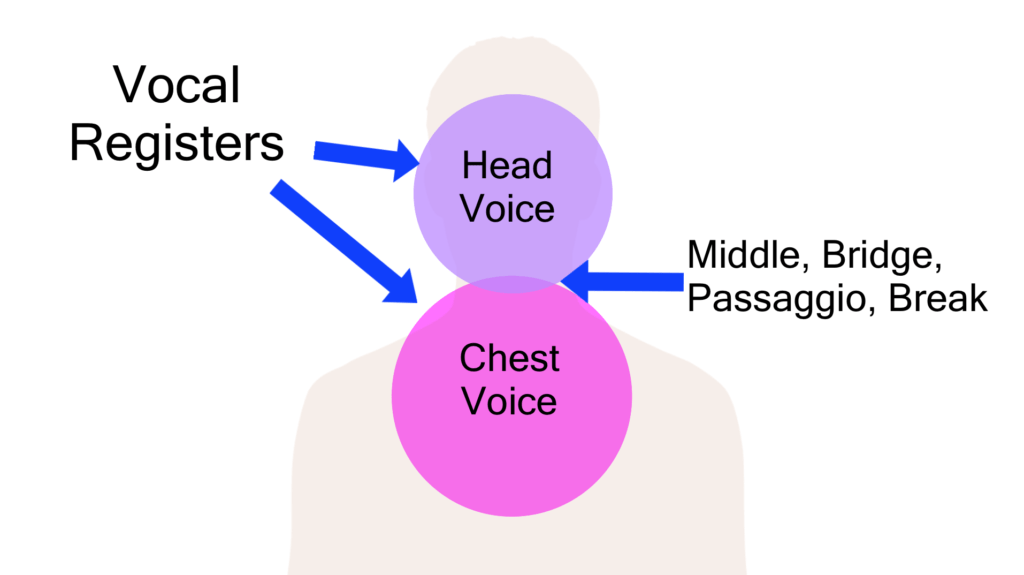
So after a while, he stops trying and says: "Hey, I just sing low. That's how my voice is."
What a waste!
It doesn't have to be this way.
In fact, most singers form an idea about their voice as a kid and stop reaching to improve it.
That's why many singers never experience the true potential of their voice.
So as you read this article, try to keep an open mind.
You may be surprised at what you discover.
The 8 Singing Voice Types
- Bass: lowest male voice type with a vocal range of E2-E4
- Baritone: 2nd lowest male voice type with a vocal range of A2-A4
- Tenor: 2nd highest male voice type with a vocal range of C3-C5
- Countertenor: highest male voice type with a vocal range of E3-E5
- Contralto: lowest female voice type with a vocal range of E3-E5
- Alto: 2nd lowest female voice type with a vocal range of F3-F5
- Mezzo Soprano: 2nd highest female voice type with a vocal range of A3-A5
- Soprano: highest female voice type with a vocal range of C4-C6
That's pretty much it.
The vast majority of voices fall into one of these eight different vocal categories.
I've included several listening examples below, but for now that's the bare bones list.
Now, there are many factors that determine a singer's voice type. Including:
Vocal Weight – the heaviness or lightness of your specific voice
Tessitura – the range of your voice where you sing most comfortably
Bridge Location– the place where your voice transitions between vocal registers
Range – the lowest note and highest notes you can sing
Timbre – the texture of the voice
Vocal registers – how large or small your different registers are
Speaking Voice – how high or low you speak
Anatomy – the length of your vocal tract (glottis to lips), size of vocal folds, body size
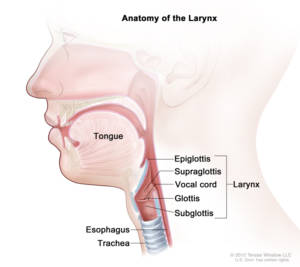
Before you go running for the hills thinking, "That's way too much to think about. I'll just sing low for the rest of my life", let me reassure you:
While all these variables are important, understanding Vocal Weight, Tessitura and Bridge Location are by far the most practical.
Even if you don't know your voice type, they'll help you make a good guess.
So let's talk about them.
Vocal Weight and Singer Voice Types
Vocal Weight is the lightness or heaviness of your voice.
You can think of vocal weight as the difference between a cello and a violin.
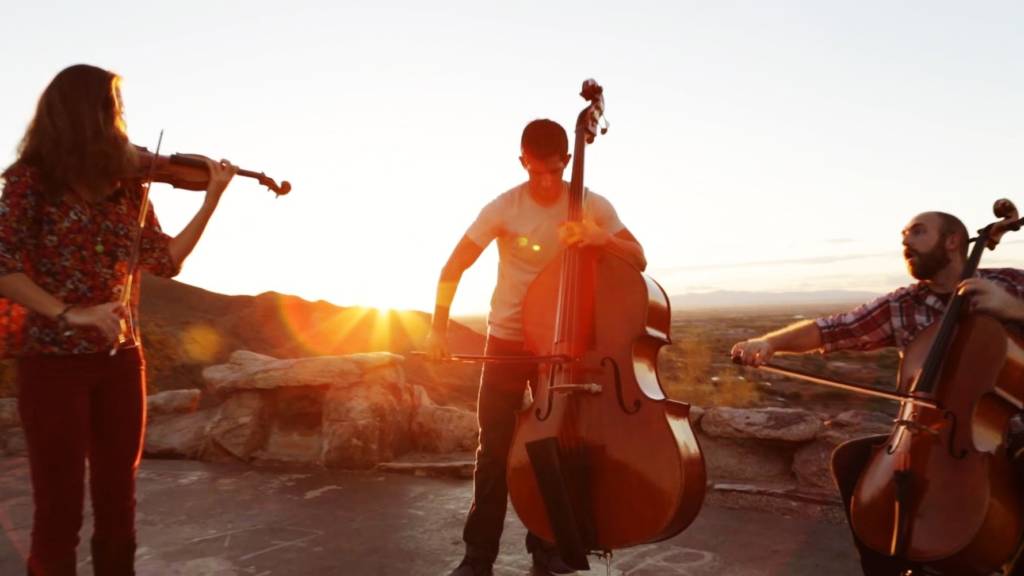
Yes, they're both string instruments.
And they can even play some of the same notes.
But if two musicians play the same note simultaneously on a cello and a violin, you'll still hear a difference between them.
Why?
Because of the size of the instrument.
The same idea applies to Vocal Weight and singer voice types.
A Bass (the lowest of the male voice types) and Tenor (the highest of the male voice types) could hit the same note.
However, theweight of the sound the singers get on those notes will be totally different.
The same is true of the female voice types.
A Contralto (the lowest of the female voice types) and Soprano (the highest of the female voice types) could hit the same note but those notes would sound totally different in their depth and weight.
That's Vocal Weight.
Also, if you're watching these groups of singers singing the same high note, you may see the bass and contralto struggling for the high note a bit more than the tenor and soprano.
Which leads us to tessitura.
Tessitura and Singer Voice Types
Tessitura is the range of your singing voice that is comfortable for you.
And the high note in the last example was not the Bass' tessitura.
But wait, how is that different from range?
Range is the measure of the lowest and highest note that a singer can possibly sing.
Tessitura is the range of notes where the voice is comfortable and at rest.
Tessitura is a much more important factor than range when you're deciding what song to sing.
As a Tenor, you may be able to hit a G5 (range), but only sing comfortably up to a C5 (tessitura).
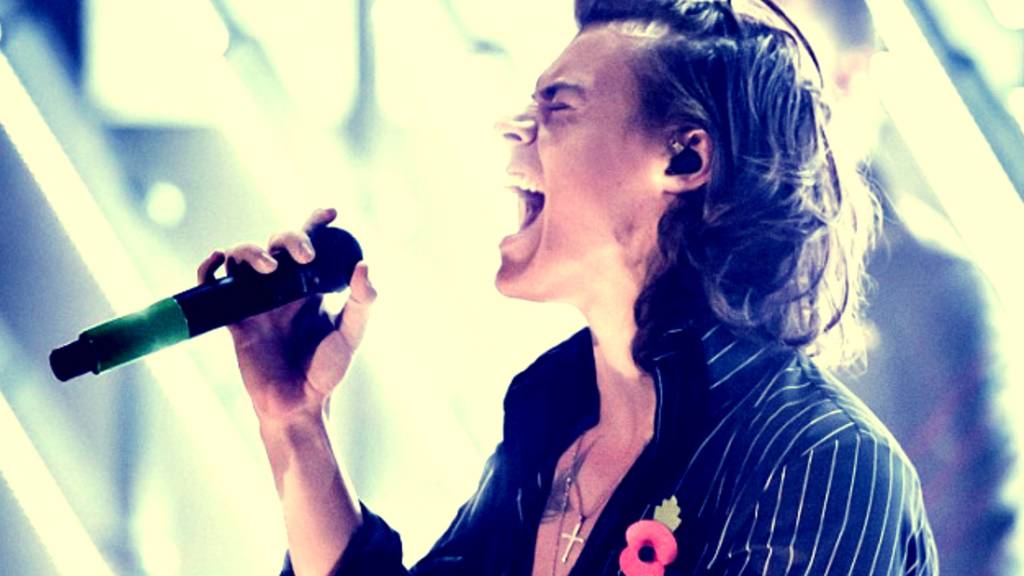
The C5 is much more doable if you had to sing it in a song.
Always remember:
The most important thing is that you're comfortable when you're singing.
If you feel like you're dive-bombing to hit low notes or squeezing the life out of your voice to sing high notes, those notes are outside your tessitura. At least for now.
Ideally if you've been singing for a while, you can sing powerfully in all the registers of your voice (If you can't, consider taking some singing lessons to help you make those transitions a bit smoother).
But when we talk about tessitura, we're talking about the comfortable singing range that spans across all the vocal registers.
Not just the chest voice.
And that brings us to bridge location.
Bridge Location and Singing Voice Types
Now that you've got an idea of how vocal weight and tessitura affect the voice, let's talk about something we all have in common.
In speaking about voice types, Seth Riggs, founder of Speech Level Singing would always say that 99% of males are some kind of tenor and 99% of females are some kind of soprano.

What did he mean by this?
It seems to defy everything we've discussed so far.
Seth realized that most of his clients struggled with finding a connection between the different registers in their voice.
This transition between the chest and head registers is called the bridge or passagio.
Seth Riggs noticed that most men and women transitioned to their second register at about the same spot: around E4 for men and A4 for women.
So why does that matter?
Because finally someone was able to point to a music staff and say this is where the trouble spot is.
No matter which voice type you're talking about, most men are going to have a tough time singing that E4 and most women have a hard time singing an A4.
That knowledge allowed Seth to create a vocal technique that addressed the need for singers to hit high notes without strain or falsetto, regardless of their actual voice type.
So from a practical perspective, if you can't sing throughout your range comfortably (tessitura), what's the point in discussing voice type?
It's better to get the whole range comfortable, then worry about choosing songs that fit your tessitura and vocal weight.
Examples of the Different Voice Types
So what do vocal weight, tessitura and bridge location have to do with voice type?
Everything!
While you can always expand your range up or down (it's easy with practice), tessitura is a much better indicator of where your voice really shines.
Likewise, knowing your vocal weight is helpful in choosing songs with notes that are right for your voice.
For example, if you're a Baritone, it's much better to hit an A4 with the full heft of your voice and let the Tenor sweat a C5.
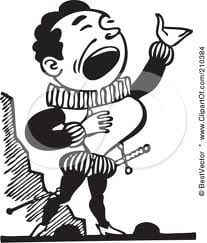
If sung correctly, that A4 will sound just as good in your voice as a C5 in his.
And with our understanding of the bridge location, we'll see that none of this matters if you're unable to sing between your different registers.
So let's take a look at the eight different voice types and some listening examples of each.
As you listen, ask yourself "How does my voice compare with this singer?"
Does your voice stay low and resist high notes?
Or are high notes relatively easy but you find yourself scraping the ground for the low notes.
Additionally, where do you hear their voice switch to a different register (if at all)?
Remember most of the men will bridge around an E4, and most women will bridge around an A4.
Male Voice Types
1. Bass Voice Types:
The Bass is the lowest male voice type with a tessitura of around E2-E4.

The Bass tone of voice types is characterized by a low, rich rumble with a ton of vocal weight.
Man, I love the sound of a true bass. They're so rare.
Here are a couple examples of popular basses:
Johnny Cash
Johnny Cash I Walk the Line
Barry White
Barry White - Can't Get Enough Of Your Love Baby.
Bing Crosby
As Time Goes By - Bing Crosby
2. Baritone Voice Types:
The Baritone is a pretty common male voice type with a tessitura of A2-A4.

The Baritone tone of voice types is incredibly exciting because it has weight and when well-trained, it can be carried beautifully up to the higher notes in the male voice.
Here are some examples:
John Legend
John Legend - All of Me (Official Video)
Hozier
Hozier - Take Me To Church
Michael Buble
3. Tenor Voice Types:
The Tenor is also a very common male voice type with a tessitura of C3-C5 and a lighter vocal weight than the basses and baritones.

Tenors are my guys!
Growing up, I was always embarrassed at how people would mistake me for a woman on the phone.
Now I'm glad I've got those high notes.
Here are some Tenors:
Freddie Mercury
Sam Smith
Sam Smith - Stay With Me (Official Video)
Jason Mraz
Jason Mraz - I'm Yours (Official Video)
Stevie Wonder
Stevie Wonder - Sir Duke [HD]
Michael Jackson
Michael Jackson - Bad (Shortened Version)
Tenors are insanely popular in contemporary music right now.
Because of their ability to hit high notes with apparent ease, they're all the rage.
But don't despair Basses/Baritones.
You can sing high notes also.
If you're a Bass, make your E4 sound amazing and you'll the audience eating out of the palm of your hand.
Ditto for a Baritone singing an A4.
4. Countertenor Voice Types:
The Countertenor, like the Bass, is a very rare voice type.
The countertenor has a tessitura of E3-E5 and the lightest vocal weight of all the male singers.

The countertenor tone of voice types is so light and thin, they always sound bright and heavenly.
When you hear these guys speak, if you couldn't see their face, you'd think it was a woman you were talking to.
Their voices are so light!
There aren't many countertenors in pop music today, probably because we love a mix of high and low notes and the low stuff is just not comfortable for countertenors.
But here's a great example:
Bruno Mars
Bruno Mars - Grenade [Official Video]
And Remember…
I've created this fantastic quiz you can use to find your voice type in one minute or less.
Female Voice Types
5. Contralto Voice Types:
The Contralto is the lowest of the female voice types and like the Basses and Countertenors, they're quite rare.
The Contralto has a tessitura of around an E3-E5 and a good amount of vocal weight.

The contralto tone of voice types almost sound like men when they speak or sing lower notes.
Here are a few examples:
Annie Lennox
Eurythmics, Annie Lennox, Dave Stewart - Sweet Dreams (Are Made Of This) (Official Video)
Nina Simone
Feeling Good -Nina Simone (Lyrics)
Lalah Hathaway
Angel (Live)- Lalah Hathaway
6. Alto Voice Types:
The Alto is the second lowest of the female voice types and has a tessitura of F3-F5.

While this voice still has a good amount of weight, many trained Altos can hit huge notes at the top of their range.
Others stay low all the time.
Singer's choice.
There have been some terrific alto singers in the last 30 years. Here are a few:
Tracy Chapman
Lana Del Rey
Lana Del Rey - Summertime Sadness (Official Music Video)
Amy Winehouse
Amy Winehouse - Back To Black
7. Mezzo Soprano Voice Types:
The Mezzo Soprano has some of the most interesting vocal sounds available to her.
Like her male equivalent, the Baritone, the mezzo falls in the middle of the female voice types.
The Mezzo has a tessitura of A3-A5 with a lighter vocal weight than the Alto or Contralto, but with enough attitude to let you know how she really feels.

The Mezzo sopranos tone fo voice types tend to make the highest notes sound incredibly exciting due to the weight they have in their voice.
Here are a few famous Mezzo Sopranos:
Madonna
Madonna - Like A Prayer (Official Music Video)
Lady Gaga
Lady Gaga - Bad Romance (Official Music Video)
Bette Midler
Bette Midler - The Rose (HD music video 1979)
8. Soprano Voice Types:
The Soprano is the highest female voice type with a tessitura of C4-C6 and the lightest vocal weight of them all.

But don't let their lack of weight fool you, modern music loves Sopranos because they can belt those high notes with power.
And since they have less vocal weight to carry around, you'll notice that Sopranos have a lot of flexibility in the different registers.
Famous sopranos include:
Ariana Grande
Ariana Grande - One Last Time (Official)
Beyonce
Whitney Houston
Whitney Houston - I Wanna Dance With Somebody (Official Video)
Mariah Carey
Mariah Carey - Vision Of Love (Official Video)
What Voice Type Am I?
Now that you're starting to see how your voice stacks up with these great singers, it's time to determine your voice type.
Remember, voice type is directly connected to your range.
So here's how you find it:
- Download the voice types cheat sheet (don't worry, it's free).
- Go to a piano or download a free digital piano app--I like the app "Real Piano". It works for Android and Mac.
- Find Middle C (labeled C4 on Real Piano) and sing the note on an "Ah" vowel.
- Once you've found the note, sing "Ah" on each note downward from Middle C until you hit your lowest note.
- A good rule of thumb is that a man will probably be able to sing down to a C3 and below and a woman will be able to sing down to an A3 or below.
- Mark the lowest note you can sing.
- Next, find Middle C again and repeat the process except moving up from Middle C to as high as you can sing on an "Ah" vowel.
- Mark the highest note you can sing.
Next, compare the lowest and highest notes you can sing to the voice types cheat sheet you downloaded.
Of course, just because you can hit low notes like Johnny Cash, that doesn't mean that you're a Bass.
Is your voice truly comfortable in his range?
Also, do you have the same vocal weight as his voice?
The bottom line is this:
All voice types are created equal.
There's no shame in being a Baritone versus a Tenor.
You can always work on your voice in singing lessons if there's something that you want to fix.
But be glad that you have your own unique voice.

If you're new to singing and still have a break or flip in your voice when you sing an E4, then it would be wise to avoid singing in that area when you're performing.
Of course, if you're taking voice lessons, we'll isolate that specific area of your voice and work on it until you have a beautiful, powerful note.
But let's pretend you're starting from scratch…
If you're a baritone, you still have plenty of songs with notes that fall below E4 (the bridge note where most men have a break in their voice).
Ditto for Basses.
In fact, you could argue that it's more important for Tenors and Sopranos to fix their break than any voice type since they have so few notes on the bottom to work with.
Here's a quick reminder of the Tenor range:

These voice types have a pretty limited range if you don't have a strong upper register.
Soprano range:

Sure they've got tons of head voice, but if there's no power to the sound, then they've really only got a little more than an octave to work with.
Now, I'll admit that while it's possible to have a career singing mostly low notes (look at Lana Del Ray and Johnny Cash), in commercial music these stars are few and far between.
We live in the age of high notes.
And everyone's trying to outdo each other.
That's why it's more important than ever that singers of all voice types work on their voices to achieve their full potential.
But remember:
Don't push yourself to hit notes that are outside your comfortable singing range.
How Do I Get the Most Out of My Voice?
If you're a Bass, you should be working to sing an E4 to the absolute best of your ability.
It'll sound just as exciting as a Tenor's high note.
If you're a Baritone that means working to sing up to an A4 with the rich and full quality that your vocal weight is built for.
If you're a Tenor and you have a break between your chest and head voice, you shouldn't rest until you fix that.
Once your voice comes together, the world will be your oyster.
If you're an Alto, make that A4 shine with the glorious weight that your voice was blessed with.
If you're a Mezzo Soprano, that means singing an A5 with the full and beautiful sound that Sopranos will be totally jealous of.
And if you're a Soprano, we'll just stare in awe as you shatter glass with a C6.
The point is that the getting the most out of your voice type depends completely on how hard you work at it.
That's why taking regular weekly singing lessons with a qualified voice teacher is the quickest way of maximizing your vocal abilities.
How Can I Put This to Use With My Own Voice?
I created a free voice types quiz you can use to find your own voice type. It includes some of the most important factors you can use to find your vocal classification.
That way, you can start learning songs and know that they'll be in a good range for you.
Now I want to hear from you.
Leave a comment below and let me know your voice type and any questions you have.
I respond to every comment.
What Are the Levels of Singing Voices
Source: https://ramseyvoice.com/voice-types/
0 Response to "What Are the Levels of Singing Voices"
Post a Comment